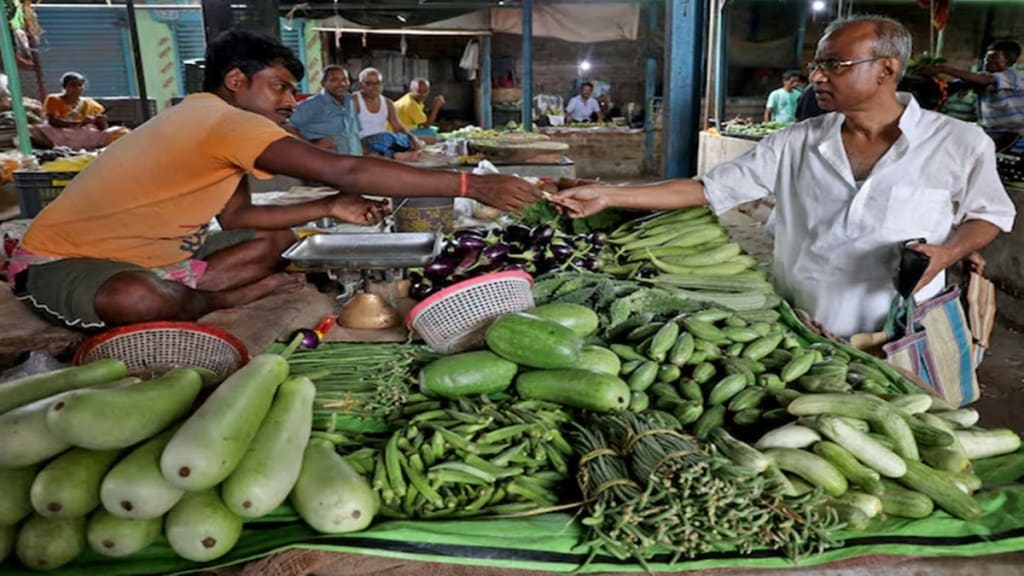India’s retail inflation, based on the Consumer Price Index (CPI), inched up to 3.65% in August from 3.6% the previous month, due to an increase in cereals prices, and a slightly lower base compared with the one for July.
In August 2023, retail inflation stood at 6.83%, lower than 7.44% in July 2023. July 2024 witnessed CPI inflation plunging to a 59-month low of 3.6%, as a high base effect depressed the y-o-y inflation print.
A similar effect was reflected in the August print as well, although with slightly reduced intensity.
Sequentially, the overall index remained unchanged in August, meaning prices remained flat on month.
Economists had anticipated August inflation to be slightly lower than the July headline, in the backdrop of fall in prices of key food items, including vegetables (which fell 2.5% on month). But sequential upside pressures on other items offset the fall.
The Consumer Food Price Index (CFPI), the index of food inflation, dropped 0.4% during August.
“Inflation is a little higher than expected even as core inflation has expectedly flatlined,” said Abhishek Upadhyay, senior economist, ICICI Securities Primary Dealership. “The upside surprise is mainly driven by sequentially higher prices in some key food categories such as cereals where a decline was expected,” he added.
Cereals prices during August inched up 0.6% on month, which curbed the fall in the subgroup’s y-o-y inflation rate and kept it elevated at 7.31% (vs 8.14% in July). Prices of edible oils, milk, and pulses increased in August as against July, while that of meat & fish, and eggs declined.
Core inflation remained flat at 3.4% during August, and is only expected to rise going forward. Rise in prices of industrial input items is likely to get passed on to retail prices in the coming months even more, say economists. Most say, core inflation may rise to 4% in the next three months.
The Reserve Bank of India has projected CPI inflation to average 4.4% in Q2FY25. With the latest number, inflation will have to spike to 5.9% in September to match the RBI’s forecast, which seems unlikely, as per economists. Most feel September print will be close to 5%.
“On balance, we continue to expect average inflation in Q2 to undershoot the RBI’s estimate of 4.4%. However, given the uncertainty on monsoon and food inflation, a change in stance by RBI in October policy remains a close call,” said Sakshi Gupta, principal economist, HDFC Bank.
Despite this easing of inflationary pressures, lower-than-expected GDP growth for Q1FY25, and the likelihood of a rate cut by the US Fed, we expect the RBI to maintain its current policy rate for now, said Sujan Hajra, chief economist, Anand Rathi. “However, the central bank’s stance and forward guidance are likely to turn more dovish, signalling potential future easing.”
I-SEC PD’s Upadhyay said: “We are not completely out of the woods in terms of outlook for food inflation given risk of spillovers from excess rains, but there is reason for optimism from pickup in sowing and softer international commodity prices including that of crude.”
The price of India’s crude oil has averaged $73.67-a-barrel so far in September, the lowest average in 33 months. This is largely a consequence of anticipated slowdown in the global economy, notwithstanding tension in the Middle East.
The impact on CPI inflation would depend a lot on how the benefits of lower crude oil play out. “The products where prices are driven by the market like ATF should move downwards. However, fuel prices at the petrol pumps will depend on whether the centre and states decide to pass on the benefit,” noted Madan Sabnavis, chief economist, Bank of Baroda.
